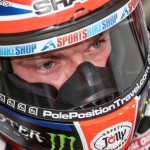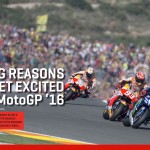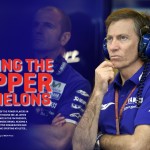On every MotoGP track there will be a section of a straight with a small white sign placed just next to the tarmac. ‘Practice Start’ is the zone for riders to rehearse one of the key elements of a Grand Prix and yet another sphere of this sport where it is not easy to clock a lot of training time.
If a chance ever presents itself then get along to watch a practice start, typically at the end of each session. It looks clumsy and clunky: riders get into position and fire away from their stationary stance with a gargle of sound and RPM note. It is the antithesis to the speed and flow of the laps they had previously been making on the track but it is perhaps the moment when the motorcycle is engaging most of its software and hardware to intense effect.
There is a subtle blend of technique from the rider and intricate technical performance from the motorcycle colliding together. The bikes are capable of 0-100 in just a couple of seconds so the measures are almost essential while the athlete has to consider timing, strength and harnessing the mechanical might of the bike to make the best launch.
Compared to the instinctive and fearsome release seen in the likes of MXGP – where 450cc motorcycles fly out of the gate thanks to launch control, RPM indicators and suspension ‘catches’ but still boast a ‘pure’ correlation between reaction/clutch, power and grip – MotoGP is a little more convoluted.
But, contrasted to motocross, is the start really that vital? A motocross athlete can holeshot a Grand Prix from the very outside of the start gate; an equivalent on the seventh row of the MotoGP grid knows his chances of bountiful position gain is nigh-on impossible.
We asked a selection of riders, as well as Pol Espargaro’s Red Bull KTM Crew Chief, Paul Trevathan, for a breakdown of what is going on with a MotoGP bike, how much is really down to the rider compared to the electronics, how the lack of practice (a maximum of six times a weekend while an MXGP athlete might do that ten times that amount in a week) is a factor and whether the a decent race start is really as crucial as it seems…
Thomas Luthi, EG 0,0 Marc VDS: I remember my first one, at Malaysia for the first test and the biggest difference was placing 100% trust in the electronics, otherwise you’ll do an instant backflip. It is kinda scary: you activate the launch control and go to full throttle and then play with the clutch. It’s a powerful bike! You need all the electronics to work perfectly with the anti-wheelie and traction control for a perfect start.
Cal Crutchlow, LCR Honda: Of course it has to be down to the judgement and reaction on the lights and then it is how you let the clutch out and how you maintain your speed. I’ve learned a lot with that, and how I’ve done it over the last year is much better than what I used to do with the Yamaha. With Ducati I was average but Honda, at first, I was bad. I changed the clutch settings a little bit.
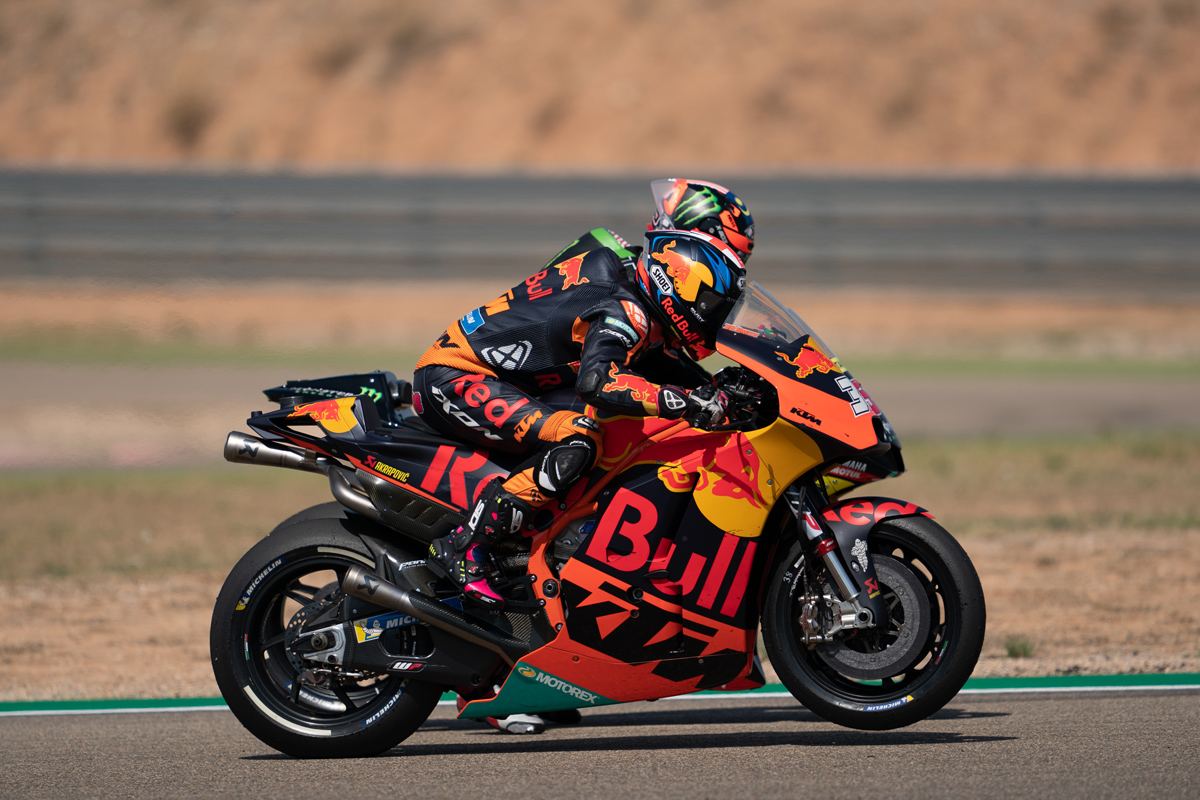
Bradley Smith, Red Bull KTM: Power output and anti-wheelie control: a lot of that comes from the bike itself. It self-regulates and knows how much power and torque it can deliver to the engine so the clutch doesn’t actually slip because slip means you are not going forward any more and there is excess power for nothing. The calculations are made, but all of the clutch movement and drag and is down to the rider. That’s why I think you see everyone react quite well and then those that make good starts have that final phase of releasing the clutch and getting the power down for the straight. That is not much to be gained in the initial jump but there is in the drag. Once you’re in first or second gear then you are flat out against the engine’s power anyway so it’s about who has the fastest engine and then slipstreaming and those sorts of things.
The technical side
Paul Trevathan, Crew Chief for Pol Espargaro, Red Bull KTM: It’s a complicated process. First gear is a long and tall gear so the clutch has to work in a good way so that the rider has a good feeling. We have an RPM limit, which is a launch control system, and is related to how much torque is delivered as well as wheelie control. There is three systems in place so the rider can go full throttle and just drop the clutch: the bike should take care of the rest.
Franco Morbidelli, EG 0,0 Marc VDS: It is pretty tricky because there is a lot of electronics going on so it is difficult to fine-tune everything and every detail. Sometimes you can mistake something or adjust it in the wrong way and it ends up looking pretty bad from outside and on the data. The work we do is to adapt the electronics to the sprocket we have on the track. Different sprocket and gearing is of course a different type of acceleration and power delivery in first gear. We need to adapt and I also need to understand the biting point and how the acceleration is with the clutch. Everything has to be adjusted.
Smith: We’re in first gear. There is no way we could start in second, you wouldn’t be able to get the gear to turn over. A 450 motocross bike will start in second or third to make that gear a bit longer and to keep the bike level and tamer. We have the same philosophy but we start with full power in first gear, that’s why we have launch control because it holds the bike at a certain RPM and away you go.
Aleix Espargaro, Aprilia Racing Team Gresini: I have to say that one of the weaknesses of the Aprilia is the launch control. We are working a lot, trying many clutches and every test we are trying many things. On the Aprilia the human ability is a lot more important. I remember on the Suzuki that the system was very different and the possibility to make a mistake was a lot smaller, but also to make a super-great start was not possible. The stability was better.
Luthi: It is difficult to get the right point with the clutch…but that’s all you need to focus on, not the throttle because you just have to set the right point with the RPM.
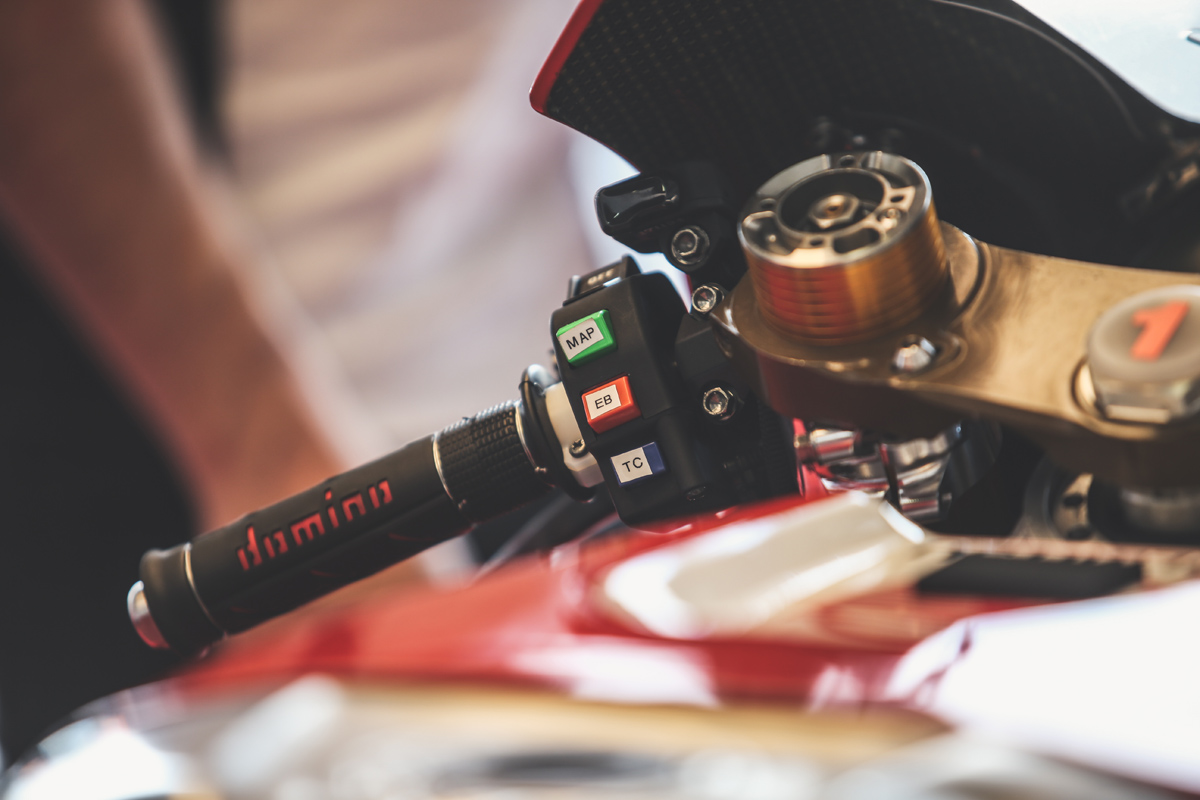
Smith: You’re glad for anti-wheelie; it will always manage the situation. At the end of the day we are all motorcycle racers and if there weren’t any traction control then we’d find a way around it. You might not be able to ride at 100% throttle everywhere but you’d feel your way through. If you watch BSB then you have 1000cc stock motorcycles at around 200 horsepower and they’ll be riding around in the wet with no traction control. That’s a national championship. We can all ride without a need for this…but the anti-wheelie is something we are all grateful for because you come out of corners and the bike might be a little loose and instead of getting carried away you can get it rotated.
Trevathan: You find your base core in testing. What makes it messy is if your rider loses confidence. It’s like in motocross; if you guy is making good starts then he can do it blindfolded because he has the ‘feeling’ and it doesn’t become a stress. If you have a guy doing bad starts then it is extra stress. A rider like Maverick [Viñales] is a prime example: if you watch his practice starts then they are horrendous and he always suffers the most at race starts but then he’s lost confidence and you can see that. He’s doing different things and they are trying to set it up for him…but you really need to have a good plan.
The human aspect and ‘style’
Jack Miller, Alma Pramac Racing: Everyone’s different and we are all trying to improve. We measure the starts when we come back [to the pits] and it is within thousandths of a second. You might see that your initial jump wasn’t good but then you had good acceleration, so you work on that. You also work on your mapping. For example in Texas where you have the hill you can almost wheelie into the hill and use a little more power compared to some places like Sachsenring where the gearbox is so short and you need a lot less power. You work with the map and also clutch feel and we play with new plates and old plates to get the nice feeling.
Trevathan: If you have a bike with a good clutch then it is easier. Our bike in particular is good for this and the riders can either ride the clutch or just drop it, depending on what’s going on there. It is always related to the clutch and the drive train and things like how stiff it is. There are not many guys who can just drop the clutch, they always have to do something. There are a few that just go ‘bang’ and that’s the best way but you really need the system to work electronically and with the right clutch and the materials and the right slip and grab. Of course it is also temperature related.
Espargaro: It’s hard to make good starts. With Aprilia, just one time this season, I think it was Misano actually, I did a super good start but in the other ones I struggled a lot more because it’s super sensitive, the clutch, the modulation, and we are working a lot. On the Aprilia I have to say the ability of the rider is still very important.
Luthi: When you get used to it then it feels normal and I would say it is easier to start a MotoGP bike than a Moto2 bike. You need a better feeling with the Moto2 bike whereas in MotoGP you just keep full with the throttle. Sure, you need to control wheelie, but those electronics help a lot. It is hard to take big step forward with the MotoGP bike but each small step gives motivation again. It is kind of up and down.
Smith: The power you have to deliver to the engine to spin the gear over to then drive at a certain RPM rather than completely dying off the face of the earth is the reason why it looks a bit clunky. We have to deliver so much power and we just cannot pull away. You have to ‘launch’ the clutch to get everything engaged and spinning to send it forward and you need a big torque demand for that. The 450 boys in motocross might start at 10% throttle because wheelspin is a limiting factor whereas for us the power is a limiting factor and it is about how you can get that clutch out. Nobody ever wheelspins on these bikes, only sometimes in the rain. It is about maximum power and maximum torque so when the clutch gets out you are driving forwards.
Trevathan: You can lose four or five seconds on the first lap and in this sport – at the moment – you cannot find that back.
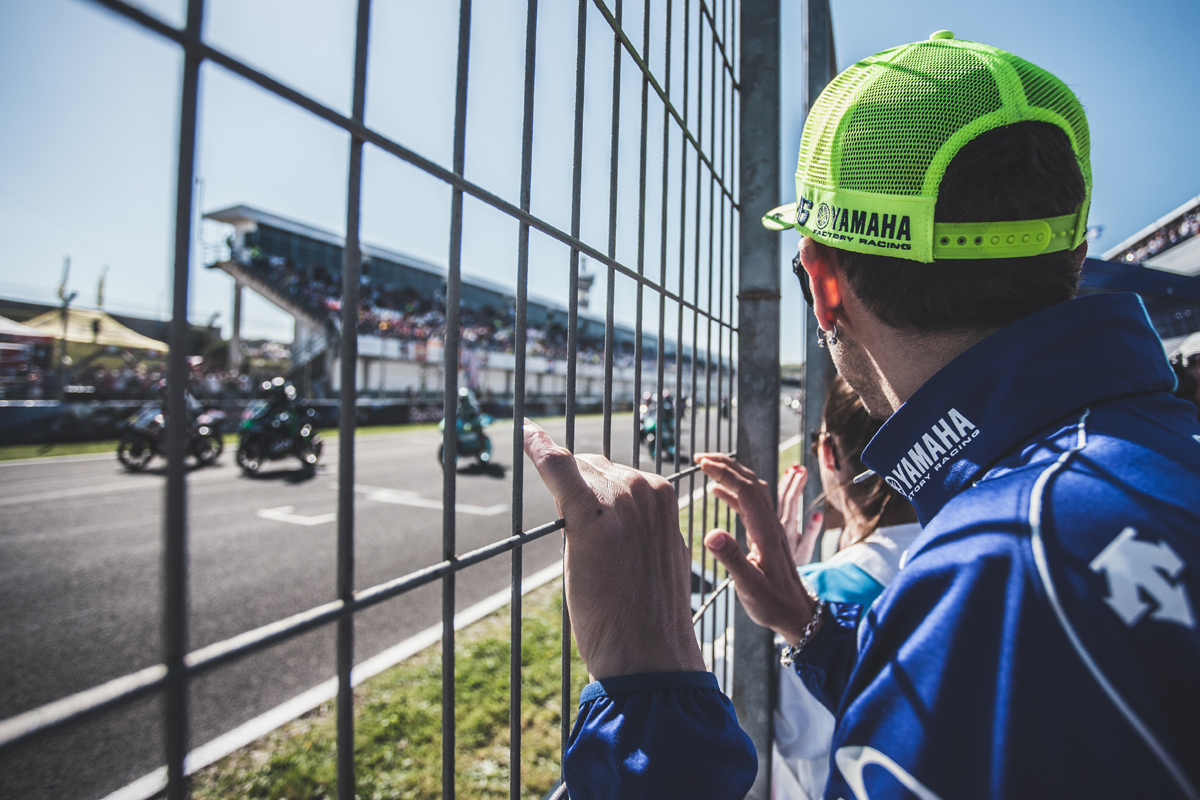
The practice & value
Crutchlow: You do practice starts all weekend at the end of the session but [that’s when] you have no fuel. At the race start you have a full tank and the bike doesn’t move the same way. You have to be careful and it has to be taken into consideration.
Smith: The more starts people make the more focussed they get on their strategies and it becomes almost like Mario Kart.
Trevathan: If you have qualified in the top ten and you just have to hold your place in the first corners then it is less of a factor because those guys know that something stupid is normally not going to happen: they will get into a rhythm and people will get dragged along. But if you are back a couple of rows and the ‘desperation’ is higher for some guys then you know there will be some moves on the first corners. That’s when it gets messy and the big gaps come. If you are 15th then you almost want to jump the light because then you will be running with a different class of rider.
Morbidelli: I try to practice a lot, at least twice per session. It’s something I started to work on only a couple of races ago because I see the top guys focus a lot on that.
Crutchlow: I don’t do many…because if it goes badly then I am already thinking about it for the race. I reckon I might only do two.
Espargaro: It’s difficult to train for because the stability that we are having right now is not the best so every clutch is a little bit different. Every time we have to play with the power from Friday to arrive in a good place in the race. Also when you don’t have a full tank it’s different. It’s not easy.
Miller: It is also down to you. I always get quite a bit of wheelie at the start because I ‘dump it’ and pull it back whereas you get guys like [Jorge] Lorenzo who are so smooth with it. When people like that get it perfect then it is unbeatable.
Trevathan: Don’t forget factors like the noise and the adrenaline. Some guys like to go on the limiter and then back-it-off a little bit and find their RPM but when there are 20 other bikes around then you don’t get that feeling. Also if you get just a little bit of wheelie then you finger the clutch a bit differently than you had all weekend and suddenly the bike isn’t set-up for that and the rider panics a little and loses his balance. The system is working against you. That’s the problem with electronics: if everything works in the right way then it is super but when things start working against each other then it just becomes a mess.
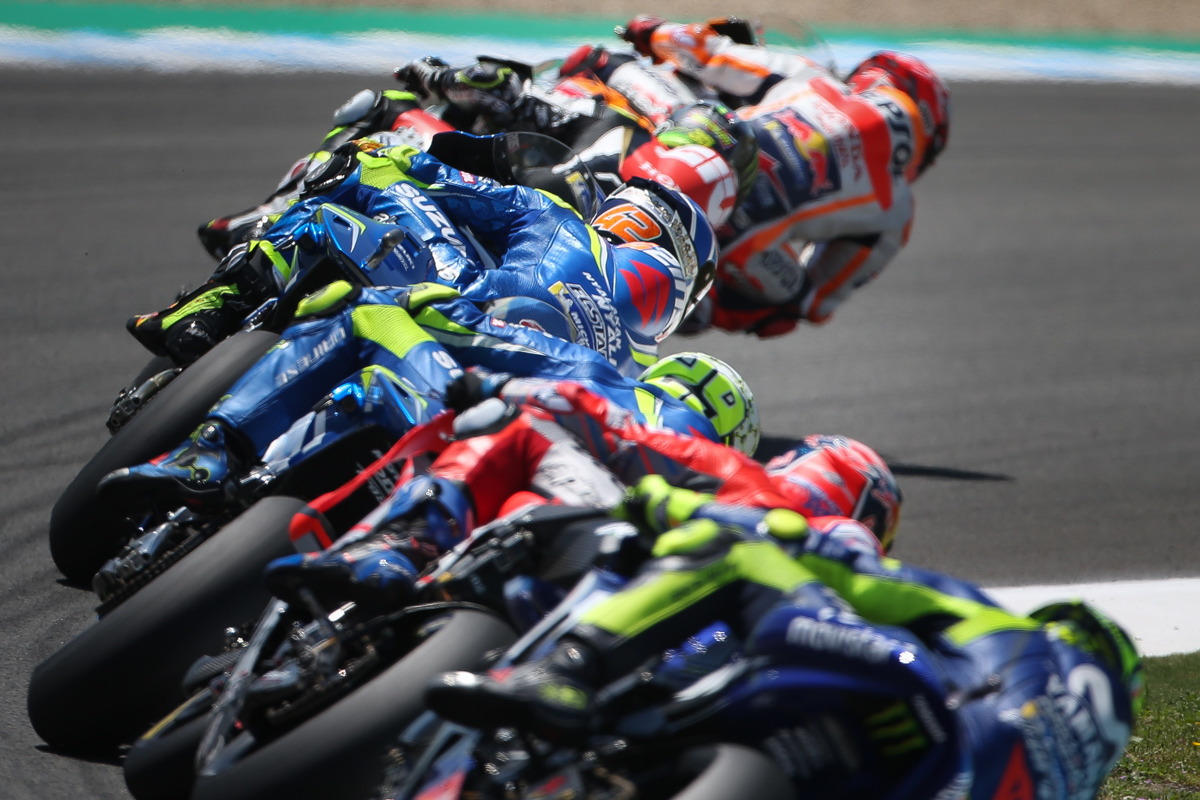
Crutchlow: If you don’t make that start and the first five guys get away then you won’t get them back. I don’t think it is a marginal gains thing: I think it is one of the most important parts of the race now. Some riders think you can practice for those reactions but I’m not sure…
Smith: There is still nothing that beats lining up with 40 guys, aiming for a metre space and going through a corner with the holeshot because being filled in with 450 roost is never fun…but there is something about the noise and energy going into the first corner and first lap of MotoGP when you have guys picking-it-up, touching each other and jostling for position. On every corner you feel there is a chance to overtake because the speed is a little bit lower than a normal lap and you don’t need to be so ‘follow my leader’. The first half a lap is a lot of fun.
Morbidelli: Of course you can still have a good race [if you don’t start well] but if you have a good start then it is a big part of the job done. If you’re struggling and you get a good start…it is an advantage that you have to take, if you can. I think we reached a level where you have to be good with everything. You cannot make bad starts and have good races. MotoGP is the highest level and the start is something everyone does well.
Trevathan: You’ve seen a couple of times in the past when the traction control has unset itself…honestly, it is so hard to understand how hard these things accelerate. I remember being here in MotoGP for the first time and standing at the final corner at Sepang just before they go onto the straight. The bikes would come out of the curve at low RPM and it was like someone shot them out of a cannon. You don’t see that on TV and you don’t really understand the force and the power that goes on. It would be interesting to have a force meter on the arms to see how a ride stays in position for the start, even though you are limiting the RPM to what the bike and tyre can handle and it isn’t wheelying: it is still hard to describe. You are talking 0-100 in 2.5-2.7 seconds and 0-180 in 4 seconds: it is a fast motorcycle with a small contact patch.
By Adam Wheeler @ontrackoffroad
Photos by CormacGP @cormacgp

